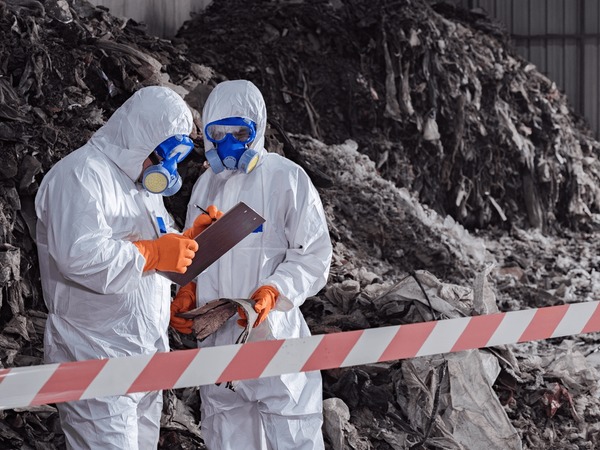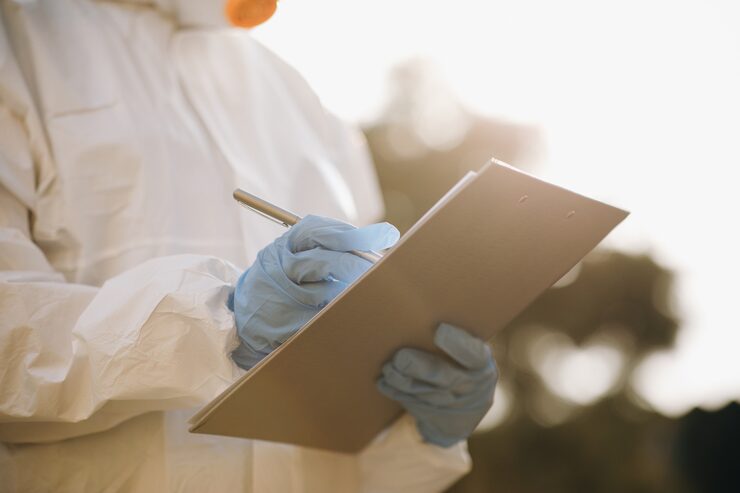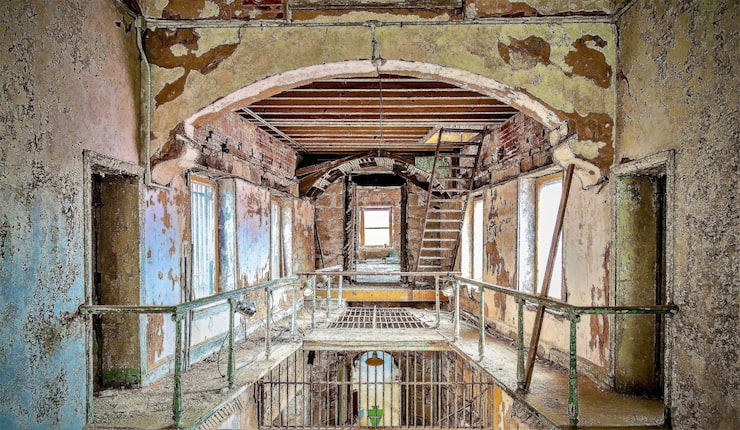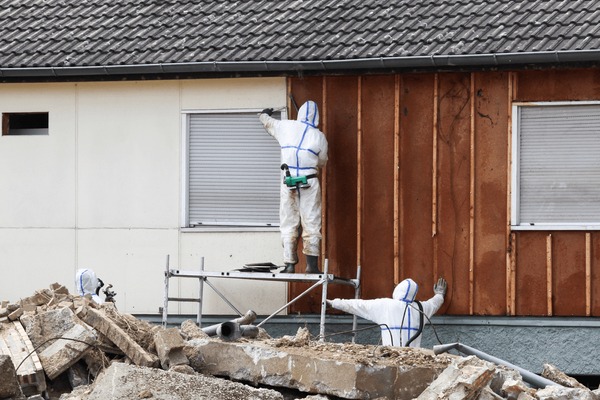In Australia, Asbestos usage in the construction industry has been banned since 2003 because of the increased health hazards that it can cause. Hence, it is essential to evaluate the presence of asbestos in the construction site.
Staying too close to asbestos particles can lead to health hazards like mesothelioma, lung disease, and other ailments. No level of safety exists when it comes to asbestos exposure. Construction companies and homeowners often face the dilemma of whether they need asbestos testing, monitoring, or a full asbestos management plan. In this blog article, we are going to guide you to choose between the different asbestos tracing services. But before that, let’s look at why asbestos was banned in Australia.
Understanding Asbestos in the Australian Context
The Australian government phased out the common use of asbestos from the 1980s and banned its use in 2003. However, many Australian homes still contain asbestos material which were built before 1990.
Where it is Commonly Found
Asbestos can commonly be found in roofing, insulation, ceiling and internal walls, eaves, fences, behind tiles, underlay flooring, and other older home structures. After the demolition of older homes, you can also find asbestos in soil. If asbestos is damaged, its fibers can be released into the air. It can cause serious health risks when it comes into human exposure.
Australian Regulatory Bodies that Control Asbestos Assessment
To control the asbestos usage in construction and other fields, there are different Australian regulatory bodies. Mainly, Safe Work Australia and state-based WHS regulators such as Safe work NSW, WorkSafe Queensland, etc., regulate the asbestos usage for public health interest.
Now, let’s understand what asbestos testing, monitoring, and a full management plan are, and when is the ideal scenario for them.
Asbestos Testing: The First Step
Asbestos testing in a property or a property site is done by professional site assessment service providers. They first conduct an on-site inspection, ensuring everything is safe and thorough.
An asbestos test includes an on-site inspection, sample collection, and lab testing of the sample.
Methods That are Used to Detect Asbestos
To identify asbestos in the property or the inspection site, three key methods are used. These methods include:
- Polarised Light Microscopy: This is a method where polarised light is passed through a plain surface to identify and quantify asbestos in soil.
- Transmission Electron Microscopy: In this method, beams of electrons are used to generate highly magnified images of small specimens. This way, the presence of asbestos can be detected at the atomic level.
- Phase Contrast Microscopy: To assess the presence of asbestos in the air, this method is conducted where asbestos fibres in the air are quantified. A PCM of minimum 500x amplification is utilised to assess a fraction of airborne particles filtered from the air.
Asbestos Testing is Ideal for Whom?
Asbestos testing is ideal for:
- Home buyers looking to buy older Properties
- Before construction projects and renovations
- Homeowners who want to renovate or demolish their older homes
Limitations of Asbestos Testing
Standard assessment techniques like PLM are used to detect the traces of asbestos in a limited range. A very low level of asbestos contamination in the soil may not be detected. Furthermore, a single test of the asbestos-contaminated soil will not be enough for ongoing contamination.
Asbestos Monitoring: Checking Ongoing Air Quality
While focusing on asbestos monitoring, the air quality of the project site is evaluated. When dealing with asbestos-containing materials (ACM), frequent air monitoring is done to identify asbestos fibres in the environment. Microscopic fibres are released into the environment if a house older than 1990 is demolished for renovation or reconstruction.
Through asbestos monitoring, the accumulation of asbestos fibres in the air can be analyzed at any specific time. Asbestos monitoring is crucial in construction or demolition projects where removal of construction debris and disturbance can occur.
Types of Asbestos Monitoring
Different types of Asbestos monitoring techniques are applied for assessing the air quality and identifying the presence of asbestos fibres in the air.
- Background Air Monitoring: Before any kind of asbestos removal, background air monitoring is used to evaluate the baseline air quality.
- Exposure Air Monitoring: This monitoring method includes sampling and analysis to ensure that the construction workers working on the project are safe.
- Control Air Monitoring: This testing and monitoring level certifies that the asbestos fibre level in the air falls under the level of post-removal.
When is it Ideal to do Asbestos Monitoring?
Asbestos monitoring is ideal in different scenarios, such as:
- Active construction areas
- Properties going through a renovation
- Construction with suspected ACMs
- Demolition of older houses in Australia.
Limitations of Asbestos Monitoring
During asbestos monitoring in the air, processes like Phase Contrast Microscopy (PCM) can fail in identifying asbestos fibres in the air. Furthermore, there are sampling limitations for these methods.
Full Asbestos Management Plan: The Comprehensive Approach
A full asbestos management plan is a comprehensive document that outlines the appropriate strategies and procedures for locating, assessing, and managing ACMs.
What is Included in a Comprehensive Asbestos Management Plan?
A comprehensive asbestos management plan includes:
Identification of ACMs
Expert asbestos consultants with experience of multiple years in the industry can locate possible areas where there might be asbestos. These are the key steps that are followed for an asbestos identification process:
- Conduction of Survey: Trained and professional site assessment service providers in Australia can help through an in-depth survey of the property or the site.
- Asbestos Registers: Maintaining transparency in creating asbestos management plans, which can help determine the level of asbestos in the soil or property. Many asbestos testing companies use Alpha Tracker to register traces of asbestos.
Risk Assessments
In this stage, the level of asbestos in the property and its ability to harm the occupants and workers are assessed. The priority of removing asbestos from the property depends on the level of asbestos present in the area.
Control Measures
Asbestos testing, containment, and safe removal of the contaminated materials are considered the key control measures. For airborne monitoring of asbestos, through comprehensive planning, you can ensure safety after the removal of asbestos is done.
Communication and Training for the Workers
In a comprehensive Asbestos management plan, it is essential to communicate the asbestos-related health hazards and remedial measures for the workers and contractors working on the project. Plus, it is also essential to make a relevant entry in the asbestos register.
Where is the Full Asbestos Management Plan Legally Required in Australia?
In Australia, a comprehensive Asbestos Management Plan (AMP) is needed in any workplace where ACM is supposed to present. Furthermore, property owners managing tenants or workers need to have this plan as per the law. In Australia, asbestos contamination is primarily controlled under the Work Health and Safety (WHS) Act 2011.
Here is a comparison table between Asbestos Testing vs Monitoring, vs Management Plan:
Here is an overview of the differences:
| Parameter | Asbestos Testing | Asbestos Monitoring | Asbestos Management Plan |
|---|---|---|---|
| Purpose | Identifies if a material contains asbestos | Checks airborne asbestos fibre levels during/after disturbance | Provides a long-term strategy for safely managing asbestos on-site |
| When Needed | Before renovations, demolitions, or buying a property | During construction, renovations, or suspected fibre release | For buildings with confirmed or presumed ACMs |
| Method | Sample collection & lab analysis | Air sampling & lab analysis of fibre count | Risk assessment, register of ACMs, control measures, and review schedule |
| Duration | One-time test (per material/sample) | Short-term | Long-term |
| Ideal for | Homeowners, renovators, buyers | Builders, contractors, safety officers | Business owners, property managers, heritage custodians |
| Outcome | Confirms asbestos presence/absence | Ensures worksite safety & compliance | Minimises long-term risks & ensures compliance with Australian WHS |
Table 1: A Comparison Between Different Asbestos Assessment Methods
Best Practices for Property Owners & Businesses
Here are some best practices for property owners and businesses that need asbestos testing.
- Consult and hire only licensed asbestos consultants who are eligible to offer expert opinions.
- Keep all your documents and records (Asbestos registers, lab reports, and monitoring results).
- Transfer knowledge to employees, workers, and contractors regarding the legal abolishment of asbestos due to the health risks.
- Make sure you are updating the management plans regularly.
To Summarise
Asbestos testing is one of the key steps in site assessment before a construction or remodeling project. Monitoring the asbestos in the air ensures the potential exposure level. To develop a comprehensive management plan, you are abiding by the law and prioritising the safety of the environment and public health. In Australia, the choice between asbestos testing, air fiber monitoring, and comprehensive asbestos management planning depends on the property type and level of contamination.
Consult Certified Asbestos Assessors Before Making a Decision?
Not sure which asbestos testing solution is appropriate for you? Consult a certified asbestos assessor who can help in making in decision for the sake of public health safety.





